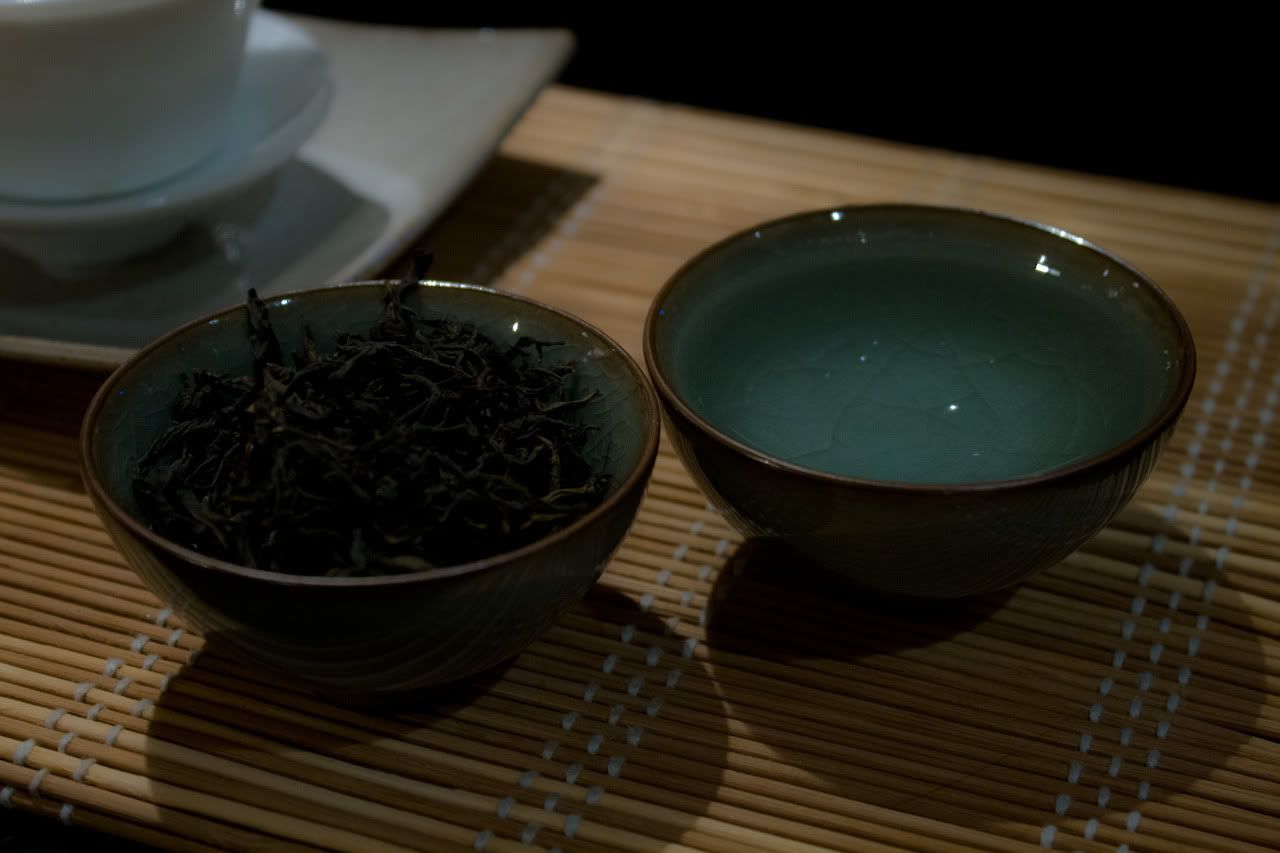This article is about something I take very seriously, though not often enough. I generally try to live by Oscar Wilde's maxim that "Life is far too important a thing ever to talk seriously about," but there are a certain few things in this world that I cannot help but revere. Mindfulness is one of them. The others are so corny they would probably make you puke. (Alright, so maybe I can't be
completely serious.) I am no philosopher, so I'll try to keep my ignorant musings about mindfulness to a minimum, but I can at least relate how I try to cultivate mindfulness while making tea.
It starts with setting up my tools. I pour water into my kettle; I taste the cool water, watch and listen to it splash. I like to close my eyes for as long as I feel comfortable doing so; without sight, one gains an appreciation for how dependent we are on it. I like to see how much I can do without vision, just to feel the uncertainty and anxiety of being without my dominant sense.
As the water is heating, I set out the rest of my things. I don't place much importance on the overall plan of how I will arrange these things, other than a simple yet pleasing composition, but I pay attention to the act of moving and placing each object. I see and feel the different materials and textures, and listen to how they interact with each other.
I pick up the bag of tea leaves. Today I've chosen a dancong from
The Tea Gallery called
"Essence of Ginger." I like dancong, especially when I can set some time aside to get serious about it. I open the bag and smell the leaf. I breathe into and out of the bag (I wouldn't recommend this if you share this tea with others or if you don't plan on finishing the bag relatively soon) to circulate the aromas and immerse myself in them. This tea smells soft, sweet, and floral; not overpowering, but confidently defined. I take a breath of fresh air, for contrast.
The water is coming to a boil now; it is violent and a bit unnerving, and starkly different than anything else at the moment. I pour it into an empty gaiwan, listening and watching it as it first splashes against porcelain, then itself. I let it sit, then pour into two cups to warm them as well. As I pick up the cups to empty them, I hold on a bit longer than I normally would; they are not hot enough to burn, but enough to cause minor pain and discomfort. Mindfulness allows us to experience pain and other "negative" experiences in a more (though not completely) objective light; they are simply sensations like any other. After I put down the cups, I run my warm fingertips across my face. Why? Hell if I know, why not?

As I take a few photos, I wonder why I don't take more photos of the water I use for my tea; I typically focus on the leaves and teaware to the exclusion of all else.
I place the dry leaf in the still-warm gaiwan, close it up, then open again to smell. It is different now; stronger, fruitier, more lively, with an unmistakable hint of ginger. I pour boiling water onto the leaves in a thin stream, again watching and listening as it splashes. I place the lid back on the gaiwan; it sings as I lightly scrape porcelain against porcelain. I wait a while, then decant into the cups.
I get jolted back to reality by an advertisement so abruptly interjected in my Pandora playlist. Damn. But, I slowly make my way back to tea.
I lift the gaiwan lid to my nose and smell. Again, it is different than before; woodsy, slightly acidic. I pick up the cups, once again savoring their slightly-uncomfortable heat with my fingers. I smell again, breathe out, then take a sip. First small sips, then big sips (though not so big that I burn myself), and everything in between. I play around with it a bit. Why not? I feel for oiliness on my lips, and warmth in my nose. The flavor is delicate, sweet, floral. I overbrewed some of the infusions, but for the moment I don't really care; I try to be mindful of the bitterness and astringency and experience them fully aware of their usual negative bodily reactions, like I did with pain earlier.
This reminds me a bit of something the composer John Cage said. "The first question I ask myself when something doesn't seem to be beautiful is why do I think it's not beautiful. And very shortly you discover that there is no reason."
I don't know if it is
cha qi, various poorly-understood chemical interactions, or just plain-ol' caffeine, but after a few infusions I begin to feel the tea's effects on my body. Most notable is my jaw tightening; not usually a pleasant sensation, but mindfulness and objective perception help to sidestep some of the discomfort. I also feel a bit drowsy and heavy-headed, which only deepens the trance-like state this tea session has put me in. It is around this time that I start to pay attention to my breathing; not as much as one would in full-on meditation, but enough to feel its effects on the body.
Then, another advertisement yanks me back out. Shit, that's annoying.
I don't do this enough. There is something remarkably peaceful and satisfying about spending a couple of hours mindfully preparing tea. I'm not sure this post is particularly useful as a guide, but hopefully you find something here that you can incorporate into your own mindful tea practice. And please, feel free to share your own musings and observations! I would love to post some links to other similar tea blog posts as well, so don't be shy...










